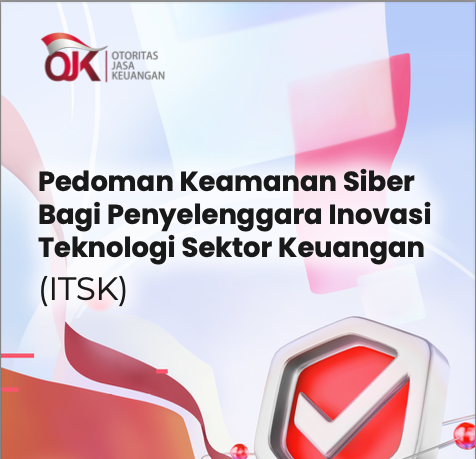
OJK Cybersecurity Guidelines for Financial Sector Technology Innovation (ITSK)
The financial sector is one of the most vulnerable industries to cyber threats. Therefore, the Financial Services Authority (OJK) has developed the Cybersecurity Guidelines for Financial Sector Technology Innovation (ITSK) as a guide for industry players to strengthen cyber resilience and protect financial data and transactions.
Cybersecurity in the financial industry is crucial due to the high risks of cyberattacks, data breaches, and other threats. This guideline aims to:
Increase understanding and awareness of cybersecurity.
Provide guidance on protecting customer data and information.
Ensure compliance with applicable regulations.
Mitigate risks and build a secure and reliable digital financial ecosystem.
Building a Secure Digital Financial Ecosystem
In the rapidly evolving digital era, the financial sector is one of the most vulnerable industries to cyber threats. Therefore, the Financial Services Authority (OJK) has developed the Cybersecurity Guidelines for Financial Sector Technology Innovation (ITSK) as a guide for industry players to strengthen cyber resilience and protect financial data and transactions.
1. Background and Objectives
Cybersecurity in the financial industry is crucial due to the high risks of cyberattacks, data breaches, and other threats. This guideline aims to:
Increase understanding and awareness of cybersecurity.
Provide guidance on protecting customer data and information.
Ensure compliance with applicable regulations.
Mitigate risks and build a secure and reliable digital financial ecosystem.
2. Cyber Threats in ITSK
This guideline identifies various cyber threats commonly faced by the financial industry, including:
Malware & Ransomware – Malicious software that can infect systems and encrypt data for ransom.
Phishing & Social Engineering – Deceptive tactics to manipulate individuals into revealing personal data.
Denial of Service (DoS) & Distributed DoS (DDoS) – Attacks that make systems inaccessible to legitimate users.
Man-in-the-Middle (MitM) – Intercepting communications between two parties to steal data.
Zero-Day Attack – Exploiting system vulnerabilities before security patches are available.
3. Data Protection and Information Security Principles
This guideline emphasizes the importance of implementing the CIA Principles (Confidentiality, Integrity, Availability) in data security:
Confidentiality – Implementing data encryption using industry standards such as AES-256 and Multi-Factor Authentication (MFA).
Integrity – Using strict auditing and monitoring systems to prevent unauthorized data modifications.
Availability – Implementing backup and recovery strategies to ensure service continuity during emergencies.
4. Cyber Risk Management
To effectively manage cyber risks, this guideline outlines the following approaches:
Risk Assessment – Identifying threats and security gaps in the system.
Risk Mitigation – Implementing firewalls, encryption, and intrusion detection and prevention systems (IDS/IPS).
Incident Response – Establishing an incident response plan covering detection, isolation, eradication, and post-incident recovery.
5. Cybersecurity Maturity Assessment
To enhance readiness in facing cyber threats, OJK recommends using various cybersecurity maturity assessment models such as:
Cyber Security Maturity Assessment (CSMA) from BSSN
CREST Cyber Threat Intelligence Maturity Assessment
Cybersecurity Framework (CSF) from NIST
6. Cybersecurity Support and Awareness
Raising cybersecurity awareness among industry players is also a key focus. OJK encourages:
Regular training for employees to understand cyber threats and mitigation strategies.
Cybersecurity awareness campaigns to educate customers on digital security.
Collaboration with various stakeholders to strengthen the resilience of the digital financial ecosystem.
Conclusion
The Cybersecurity Guidelines for ITSK Providers is an essential document providing strategic directions for addressing evolving cyber threats. By adopting the standards and best practices outlined in this guideline, the financial industry can build a more secure, resilient, and trustworthy digital ecosystem for all stakeholders.

